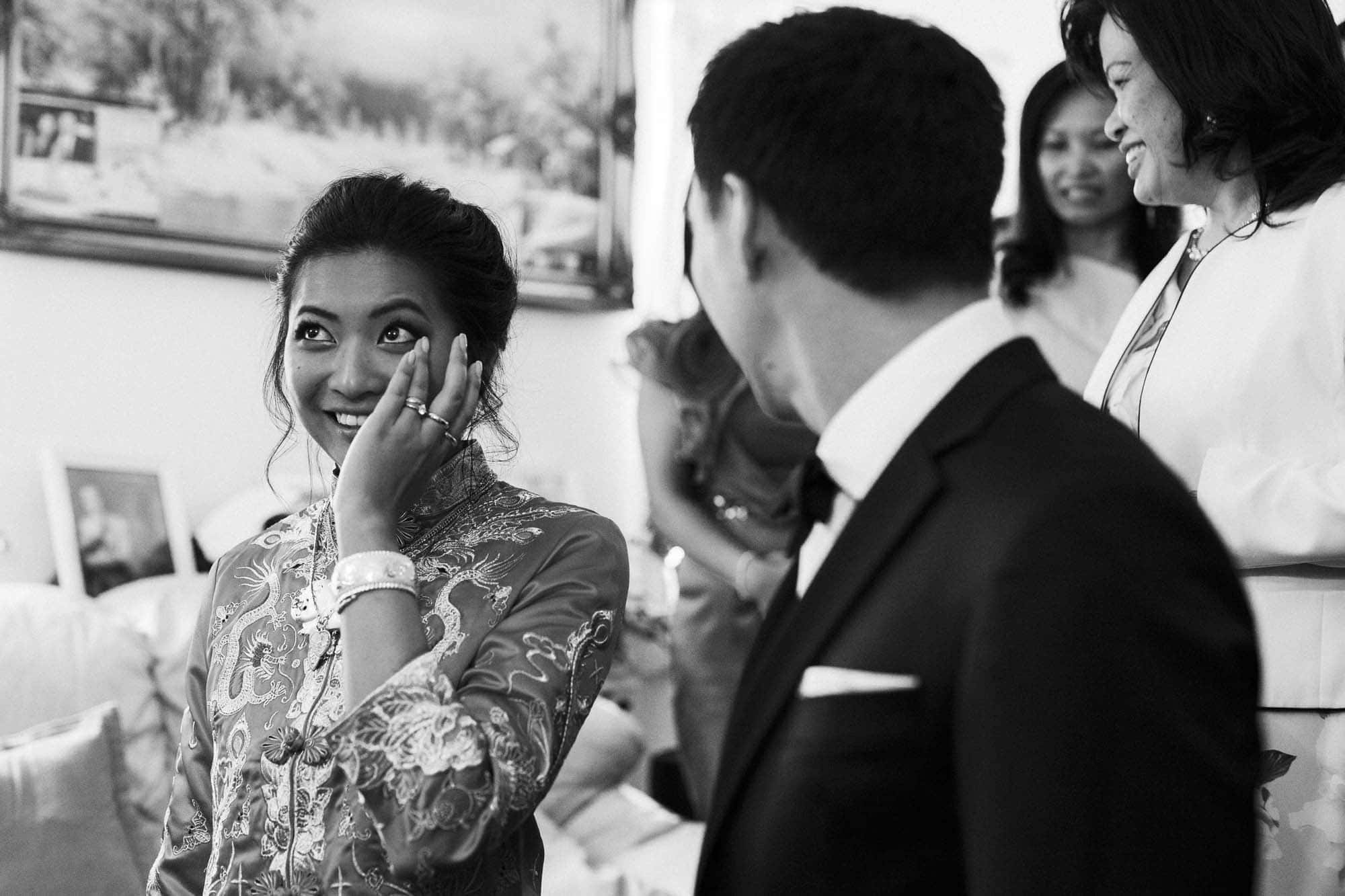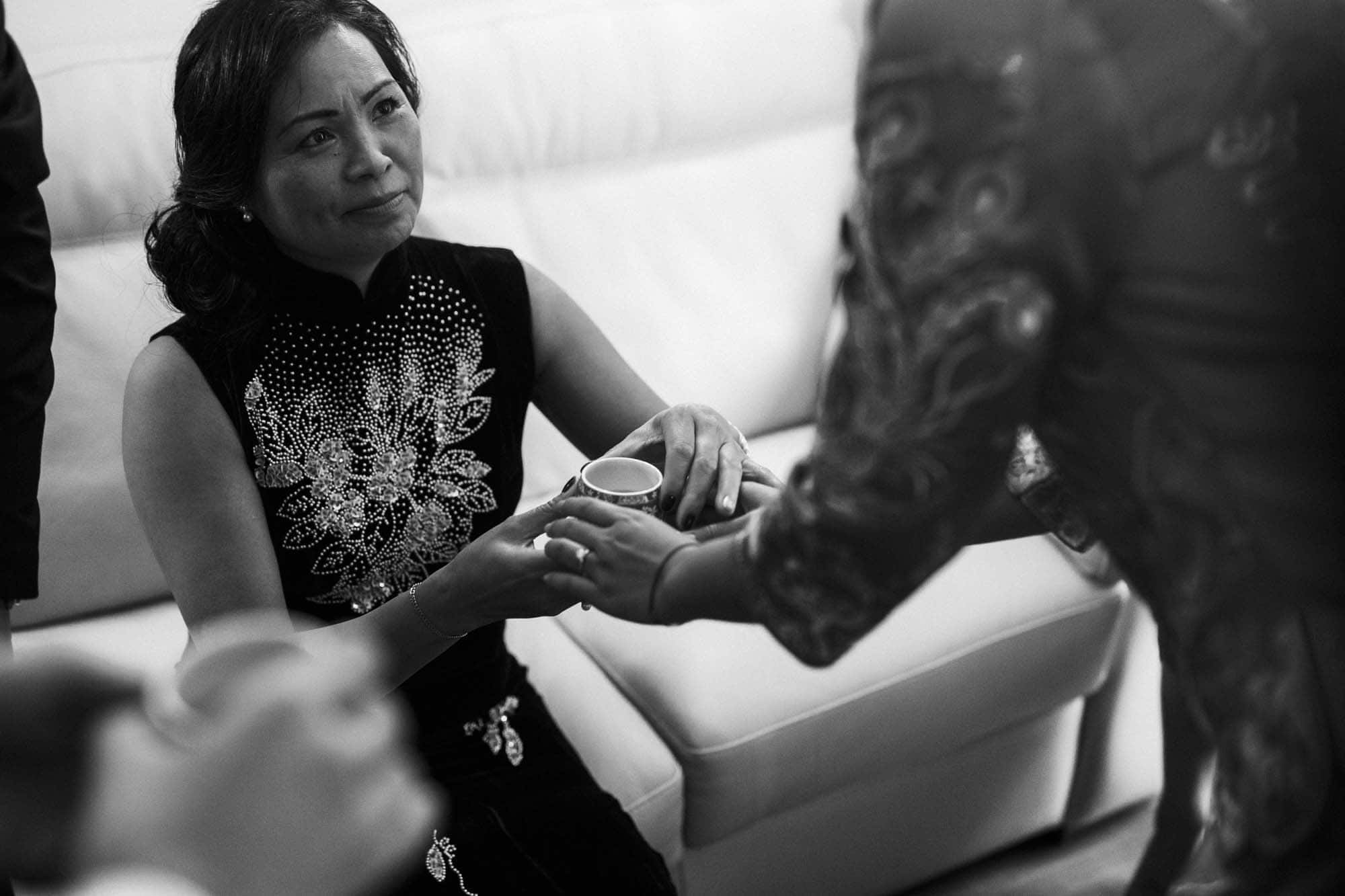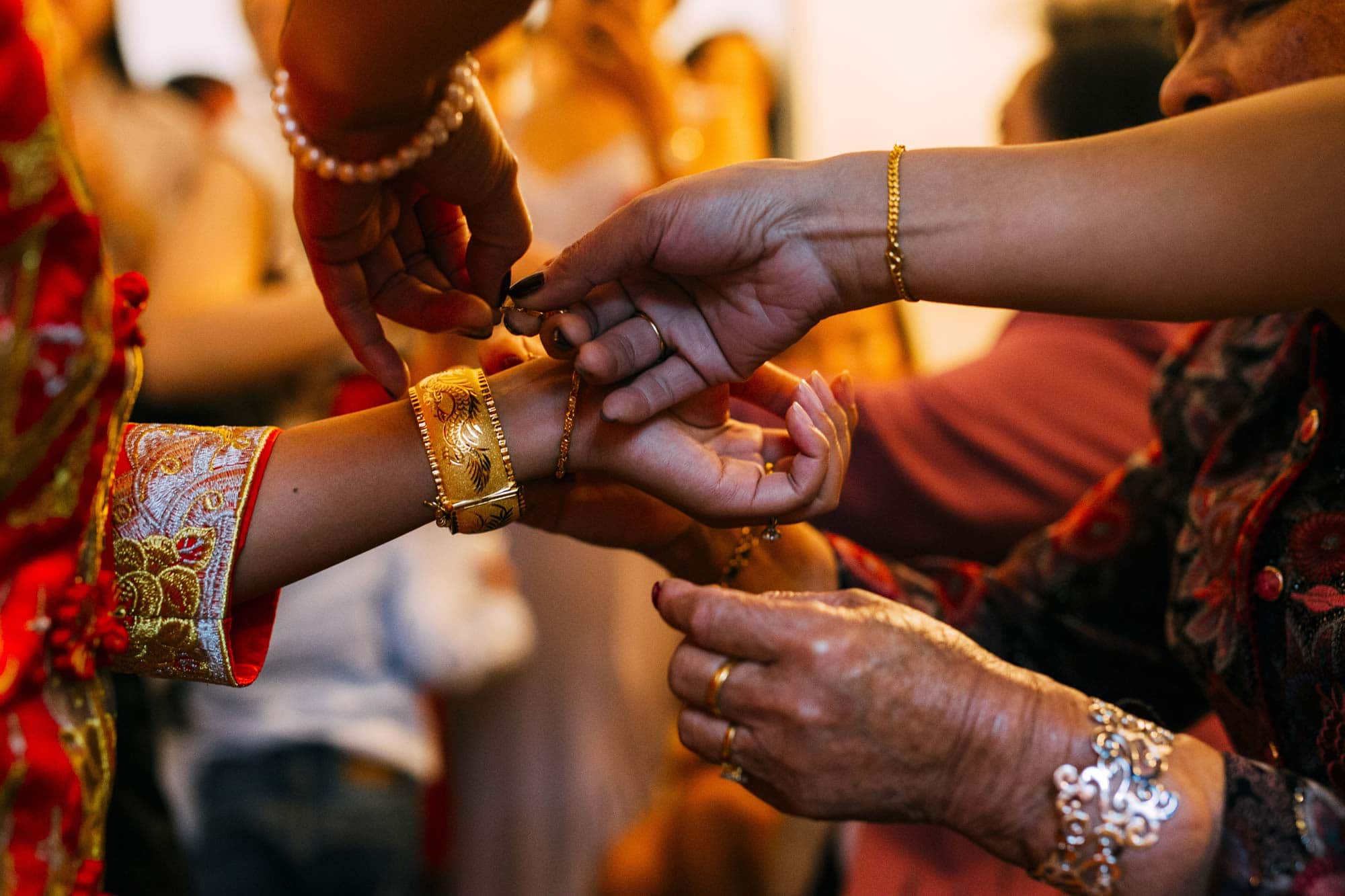Navigating the Richness of Chinese Wedding Traditions: A Photographer’s Perspective
Each wedding I photograph is a new journey into the depths of tradition, culture, and human emotions. Among the numerous cultural experiences I’ve had the privilege to capture, Chinese weddings stand out for their centuries-old rituals, vibrant colours, and the profound symbolism they encompass. Each moment holds significance, each gesture tells a story, and as a wedding photographer, I am honoured to be a part of this beautiful narrative.

The Bedrock of Harmony: Traditional Chinese Wedding Preparations
Preparations for a traditional Chinese wedding begin long before the actual day. The families of the bride and groom engage in meticulous planning, selecting auspicious dates based on the lunar calendar and engaging in rituals such as “Guo Da Li” or “Betrothal Gifts Exchange Ceremony”, where the groom’s family presents betrothal gifts to the bride’s family. Capturing these initial rituals, the emotions, the intricate details of the gifts, and the respectful exchanges, I find myself plunged into a world rich in culture and tradition.
Bridal Beauty: The Qipao and The Phoenix Crown
One of the most striking elements in a Chinese wedding is the bride’s attire. Clad in a traditional Qipao (a red silk dress) or a two-piece known as Qungua or Kwa, the bride personifies elegance and tradition. Some brides also wear a phoenix crown, a symbol of royalty, further accentuating their beauty. As a photographer, capturing the bride in her splendid attire is always a moment of awe and admiration.
Tea Ceremony: Respect and Blessings
The Chinese tea ceremony is a momentous event, representing the official introduction and union of two families. The couple serves tea to their elders in order of seniority, expressing their respect and gratitude. The elders, in turn, offer their blessings and red envelopes with money (hongbao). The intricate tea sets, the solemn expressions of respect, and the heartfelt blessings, all present unique opportunities to capture the essence of this tradition in my photographs.
Underneath the Red Umbrella: The Wedding Procession
In traditional Chinese weddings, the bride, shaded under a red umbrella, is escorted by her father to the wedding venue. The umbrella shields her from evil spirits, according to tradition. The emotion-laden moment when the father hands over the bride to the groom, and their shared glances, form some of the most touching moments that I have been privileged to capture.
The Banquet: A Feast for All Senses
Chinese wedding banquets are lavish affairs with multiple courses, representing abundance and prosperity. Each dish served carries a symbolic meaning. From capturing the grandeur of the banquet setting to the detailing of each symbolic dish, and the joyful interactions among guests, these are moments of sheer delight for any photographer.
The Grand Send-off: Farewell to the Newlyweds
In line with the importance of numbers in Chinese culture, the wedding festivities typically culminate with a grand fireworks display, believed to drive away evil spirits and bring luck to the newlyweds. The sky lit up with vibrant colours against the backdrop of the night makes for a magnificent visual treat and a grand conclusion to the wedding celebration.

Yuelao
Yuelao is the god of match making. He is in charge of peoples marriages. Young couples go to the temple to ask for his guidance. He unites couples by tying red string around the ankles of the future husband and wife.
Making a proposal
After a young man has found his future wife, his parents would visit the girl’s parents to ask for a marriage proposal. Once this had been accepted, plans were made to negotiate the betrothal.
Betrothal gifts and Dowry payment
The grooms parents produce gifts displaying wealth and good fortune. The girls family in turn sends a dowry consisting of jewellery.
Testing the Groom
Testing the groom is also known as ‘door games’. The bridesmaids give the groom a series of tasks to see if he is worthy enough to marry the bride. Kit was tested more than most at his wedding.
The test usually involves asking the groom questions about the bride to see how well he knows her. There is usually an eating challenge which consists of something sweet, sour, bitter and spicy. The games can become very boisterous.
Once the games have finished the groom hands over a red envelope full of money to the bridesmaids, this then allows him to enter the brides room.
Chinese tea ceremony
This ceremony honours both sets of parents.
The ceremony can take place in the same house or at separate locations. A red tea set with a double happiness symbol is used. The couple kneel on tea pillows facing the parents and take it in turns to serve tea to each set of parents.
Wedding colours
Chinese brides do not wear white for a traditional Chinese wedding. They like to wear bright colours especially red.
White dresses are normally worn by western brides.
Wedding date
In traditional Chinese culture, the couple would seek advice on choosing a date for their wedding. The advice is usually from a fortune teller, feng shui master, or they consult with the Chinese calendar, taking into account their birth zodiac sign.
Guest invitations
Traditional invitations are red with gold wording, which bears the happiness symbol.
On the invitation there will be all the details of the wedding and wedding party.
Colours and Symbols
Red and gold play a critical role in all Chinese wedding decorations. The former is linked to love, success, happiness, prosperity, luck, fertility, honour, and loyalty, while the latter is a symbol of wealth.
The Double Happiness symbol, composed of two identical Chinese characters meaning joy, appears in all Chinese weddings. Other symbols include dragons, phoenixes, and mandarin ducks as they denote happiness.
Hair combing tradition
At the brides house, the night before the wedding this traditional ceremony takes place. It is to symbolise the transition into adulthood. The hair combing is usually carried out by the mother of the bride or a close female relative.
The bride and groom shower with pomelo leaves to get rid of any bad spirits. They will then dress into red clothes and slippers. the bride will sit in front of a mirror, while dragon phoenix candles are lit and blessings are given as the brides hair is being combed.
Lucky colours and symbols
Red and gold are very important in Chinese wedding decorations.
Red is linked to love, success, fertility and happiness Gold is a symbol of wealth.
The gifts
The newlyweds receive gifts of red envelopes full of money. Older guests may also give gold jewellery.

Concluding Thoughts: The Beauty of Chinese Wedding Traditions
Being a part of Chinese weddings, I have the opportunity to document not only the beautiful traditions and the joyous celebrations but also the deep emotional bonds that these rituals represent. Each photograph is a testament to a culture rich in history and symbolism, a story of love, respect, and familial bonds. There are many different ethnic groups living in China. As such wedding traditions can vary across the country. Here are a few of the more commonly seen traditions at a Chinese wedding day. If you’re looking for a chinese wedding photographer who is knowledgeable of the traditions and ceremonies and will capture all of the important moments, give me a call!
